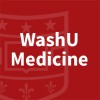
Assessment of the Risk of Contralateral Non Simultaneous Neck of Femur Fracture in the Elderly....
Neck of Femur FractureNeck of femur fractures are common in the elderly and are the source of significant morbidity and mortality. This study is based on a new technique developed in Ben Gurion University, with which investigators are able to asses the structural 3 dimensional strength of a bone by applying a unique simulation on a CAT scan of the bone. The purpose of this study is to evaluate the risk of a contralateral neck of femur fracture after the first neck of femur fracture and to estimate the potential fracture characteristics.

DePuy Trochanteric (ATN) Nailing Clinical Outcomes Trial
Femoral Fracture (Proximal)The purpose of this study is to monitor trochanteric fracture healing and review the performance of the ATN system.

ProspEctive Cohort Study on Multidisciplinary Approach to Femur FRactures' manAgement in Over 65...
Hip FracturesIntertrochanteric Fractures1 moreHip fractures are an increasing public health concern as the population continues to age. The increased morbidity and mortality in the 12-month period after hip fracture is largely related to decreased mobility. However, very few studies have analyzed the radiographic factors associated with gait impairment after intertrochanteric hip fractures. This study evaluates gait and mobility after surgical fixation of IT fractures in elderly population with Gait Analysis in combination with clinical and radiographic information.

Development and Validation of Intraoperative Image-quality Criteria
Proximal Femur FracturesAn expert panel of surgeons agreed that there is not any established, standardized approach to the teaching of intraoperative imaging and that there may be practice gaps in decision making and the use of imaging among trauma surgeons. The panel is set to initiate a consensus-based evaluation process to develop a list of criteria for assessing images and would like to validate these criteria for differentiating good quality versus poor quality images in term of reliability and accuracy.

The Role of Fat Emboli in the Trauma Inflammatory Response
Femoral FractureThis is an observational study designed to investigate the role of fat emboli in patients who are undergoing a tibial or femoral fracture procedure in the operating room. The purpose of this study is to obtain samples of bone marrow and blood during tibial or femoral fracture procedures to understand the inflammatory response.

Performance Improvement Program on Imaging II
Hip FracturesFemoral Fractures2 moreThis study consists of a retrospective and a prospective part. For each part and in each of 5 clinics, one intraoperative postimplant image (lateral view) of 25 patients with pertrochanteric fractures will be assessed by 5 surgeons per clinic. There are two assessments in the retrospective part. a) before an educational intervention, b) after the educational intervention. The evaluated images at these two timepoints are identical. In the prospective part, the surgeons apply their new knowledge from the educational intervention. They perform the positioning of the patient during the intraoperative fluoroscopy and record the image according to the teaching material. One postimplant image of each patient will be used for the evaluation. At all three timepoints of image assessment, a questionnaire with the same set of 7 criteria (Q1-Q7) for assessing the radiographs is used. The criteria refer to the content of the educational material.

Pediatric Femur Research Project
Femur FractureCurrent treatment protocol for pediatric femoral shaft fractures is immediate spica casting for patients 6 years and younger and for patients over 6 years and older is percutaneous or open placement of titanium elastic intramedullary nails. The investigators would like to evaluate the current treatment protocol by comparing those patients 6 years and younger treated with closed reduction and spica casting to those 6 years and younger treated with percutaneous pinned with titanium elastic intramedullary nails or submuscular plating. The investigators will be comparing their post-operative functional level, pain management, impact on family and complications through chart and x-ray reviews. The goal is to improve patient care pre and post-operatively for those who have sustained a femoral shaft fracture 6 years old and younger and increase the knowledge of those residents/physicians who care for this patient population.

Post-operative Anemia in Lateral Fractures of the Femur.
Femur FractureIt was conducted a prospective study with a series of 45 patients with lateral fragility fractures of the femur treated by three different intramedullary nails. Patients were randomized in Group A (15 patients treated by Affixus Zimmer-Biomet), Group B (15 patients treated by EBA2 - Citieffe) and Group C (15 patients treated by Proximal Femoral Nail Antirotation Synthes). One independent observer performed seven biochemical evaluations (hemoglobin serum value) from admission to patient discharge. Surgical time and Blood transfusions number were reported for each partecipant.

Combined Drug Therapy in Lateral Fragility Fractures of the Femur
Femur FractureIt was conducted a prospective study with a series of 50 patients treated by intramedullary nail using Clodronic acid and Vitamin D (study group including 25 patients) and patients with the same fractures treated with Vitamin D alone (control group including 25 patients). One independent observer performed clinical, biochemical and functional evaluations at T0 (1st day post-surgery) and at T1 (12 months later) Biochemical markers (serum calcium level, serum phosphate level, PTH (parathormone), Vitamin D, serum C-terminal telopeptide), VAS (Visual Analogic Scale) and HHS (Harris Hip Score) score, and femur densitometric views were administered at each evaluation.

Analysis of the Relationship Between Early Postoperative Anemia and the Evolution of Autonomy at...
Femoral FractureFracture of the upper extremity of the femur is a condition whose frequency increases with age. It is a serious disease, with multiple consequences such as a decrease in life expectancy, quality of life and patient autonomy. In this observational study, the investigators wish to evaluate the evolution of the autonomy of very elderly patients operated on for an upper extremity femur fracture as a function of early post-operative anemia.
